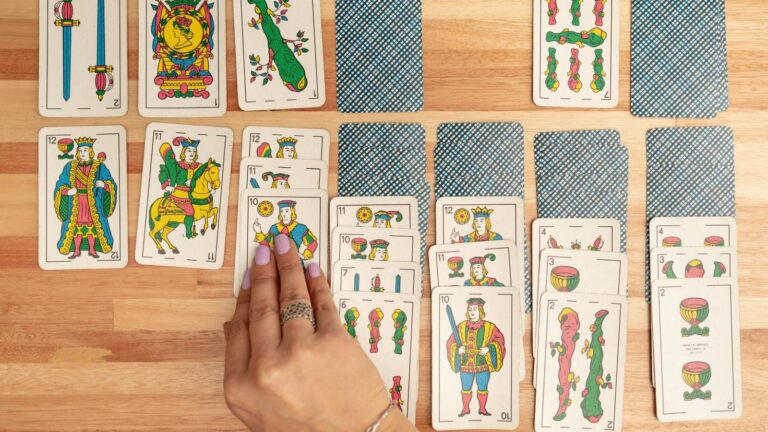For decades, Solitaire has been the quiet companion of countless coffee breaks, lazy Sundays, and moments of focus between tasks. It’s one of those rare games that doesn’t need a crowd, fancy equipment, or even a lot of time — just a deck of cards (or a few clicks online) and a bit of patience.
If you’ve ever wondered how to set up Solitaire properly or want to understand the basics before jumping into solitaire, this guide will walk you through it — from the classic setup to a few smart strategies that make the game more rewarding.
The Classic Setup: Where It All Begins
Solitaire — also known as “Klondike” — uses a standard deck of 52 cards. When you play the physical version, the setup is half the fun. Here’s how it goes:
- Deal one card face up to start the first pile.
- Deal six more piles to the right, placing the top card face up on each.
- Every pile should have one more card than the last, with only the top card showing. (So the first pile has one card, the second two, the third three, and so on up to seven.)
- The rest of the deck becomes your draw pile, which you’ll use throughout the game.
- Above these piles, leave four spaces — those are the foundation piles, one for each suit, where you’ll build from Ace to King.
Once everything is laid out, take a breath and look at the board — it’s a simple setup, but it holds endless possibilities.
If you’re playing digitally, sites that offer free solitaire handle this layout for you instantly. Many players also enjoy FreeCell, a variation where all cards are dealt face-up — making it more about planning than luck. But knowing how it works helps you understand what’s happening behind every move, and it makes the game feel more intentional.
How to Play
The goal of solitaire is to move all the cards into those foundation piles by suit, starting with the Ace and ending with the King. You can move cards around the tableau (the seven piles you dealt) by stacking them in descending order, alternating colors — a red nine can go on a black ten, for example.
When you clear a pile, only a King can fill the empty space. If you run out of moves in the tableau, draw from the stockpile and see if any of the new cards fit into play. Every move either opens new opportunities or brings you a little closer to victory.
Winning feels great because it’s not just about luck — there’s real thought behind each decision. You’ll find yourself analyzing moves, weighing risks, and sometimes realizing that holding off on a “good” move now leads to a smarter one later.
Simple Tips That Make a Big Difference
1. Flip hidden cards as soon as you can.
The more face-up cards you have, the more flexible your next moves become. Prioritize uncovering new cards over simply stacking ones that are already visible.
2. Be strategic with your foundations.
It’s tempting to send every Ace or Two to the top piles immediately, but sometimes it’s better to keep them in play to unlock new moves below.
3. Don’t rush to fill an empty column.
Only place a King there if it opens a path to reveal more cards or keep the game moving forward.
4. Balance red and black sequences.
If you have a choice between two similar moves, go with the one that gives you more color variety — it’ll prevent you from getting stuck later.
5. Use the stockpile wisely.
Think ahead before flipping through cards. Each new draw changes your options, so plan like a chess player, not a gambler.
The beauty of Solitaire is that it rewards patience and quiet thinking. Over time, you’ll start seeing patterns — that subtle click of recognition when a move “just feels right.”
Why Solitaire Still Works Today
There’s a reason Solitaire has survived through generations and gone digital. It’s simple enough to learn in minutes, yet rich enough to keep your mind engaged for years.
When you play free solitaire online, the experience is smoother — no shuffling, no setup time, and no scattered cards. But what hasn’t changed is how it makes you feel: focused, calm, and quietly competitive with yourself. It’s that perfect mix of logic and relaxation that makes it timeless.
More than just a card game, Solitaire is a small exercise in mindfulness. You can’t force it or rush it — you move one card at a time, making the best decision you can with the information in front of you. In a way, it’s not so different from real life.
From a Game to a Habit
The best part about Solitaire is that it fits anywhere in your day. Ten minutes before a meeting? A quick round helps you reset. Need to unwind after work? A quiet game slows your thoughts down. It’s a pause button that’s good for your brain — improving focus, memory, and decision-making without feeling like “work.”
And now that you can start a new game instantly with free online solitaire, there’s really no reason not to give your mind that short, meaningful break.
Whether you’re a beginner learning the rules or a longtime player chasing the perfect win streak, Solitaire is the same at its core — a game of patience, rhythm, and subtle satisfaction. It’s proof that sometimes the simplest games end up being the ones we never stop playing.




